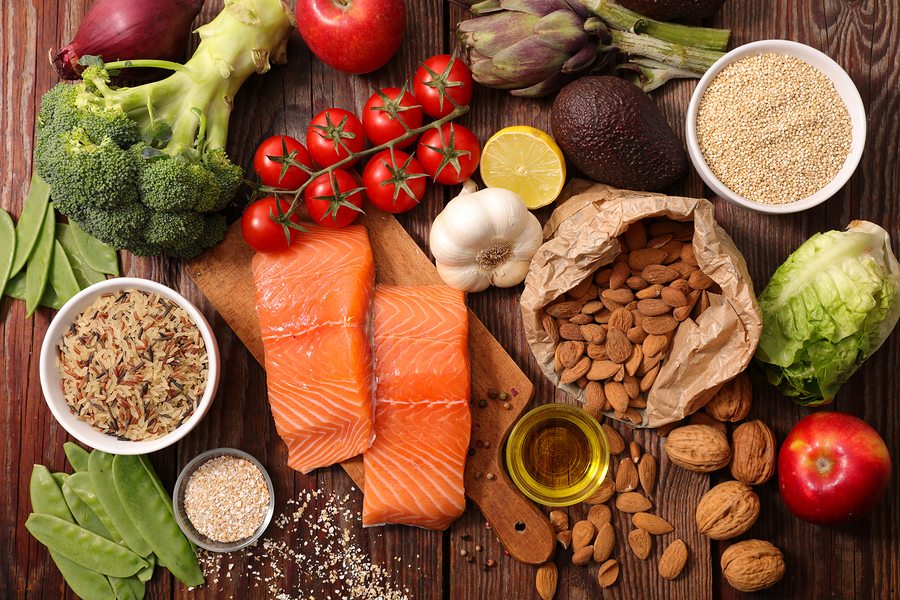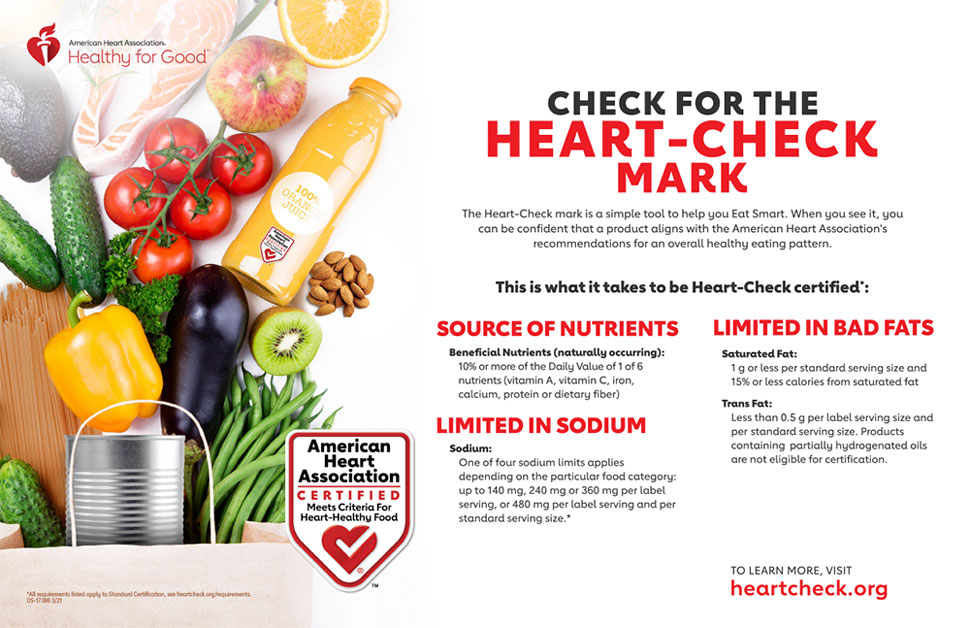
There are many things you can do to keep your diet full of nutritious and tasty foods, but there are also a lot of unhealthy healthy foods that you probably don't know about. Calories may not be everything, but they do matter. The nutritional value and quality of the food is what is most important. You can also make some changes in your diet by replacing processed foods with whole grain alternatives. Here are some top options. It is better to eat a variety of foods than one.
Avoid sugary snacks and drinks. Added sugar and fat can cause health problems. Most store-bought muffins are just cake in a muffin shell. Don't eat "healthy" frozen dinners. They are full of preservatives, sugar, and other harmful ingredients. Many fat-free and gluten free desserts lack nutrients. Even so-called healthy food are often full of artificial junk. Natural fiber is an essential component of our bodies and high-GI fruits such as bananas or mangos can be a good source.
When it comes to choosing healthy foods, choose those that contain less fat, sugar, and sugar. High levels of these nutrients can be considered unhealthy. It's better to avoid them than over-eating them. If you really want to indulge in a sweet treat, choose the healthier option. Organic and free-range eggs are some of the best choices. Consult a doctor before you make any decisions. It's simple to change to a healthier diet. It doesn't take much effort or research to make the switch to a healthier diet.

Include a wide range of healthy foods into your diet. Try to eat more fruits and vegetables than you normally do. They are healthier long-term. You don't have to be a calorie-monster in order to reap the health benefits of healthy food. There are many different ways to enjoy more healthy food without feeling hungry. Balance between healthy and unhealthy foods is the best way to lose weight while staying healthy.
Fast-food chains often claim to be health-conscious, but they shouldn't be confused with the words "healthy" on their packaging. Even "healthy" foods may contain sugar substitutes which can increase caloric intake as well as increase the risk to develop diabetes. Healthy eating habits include avoiding unhealthy foods and sticking to whole foods. There are many options to make your diet more healthy. Only make healthier choices.
Another common example is plant-based food. They're not real meats. These foods look and taste like real meat, and they contain high amounts of sodium and fat. They are therefore not recommended for your daily diet. In order to avoid the potential dangers of these foods, you should stick to whole, nutrient-dense foods. It is important to have the right balance between healthy and unhealthy foods in your daily diet.
You can opt for organic or raw foods if you prefer a natural choice. Many of these foods are low-fat and rich in antioxidants. They are also high in vitamins C, A. They are also low in calories so they are a great choice for people with diabetes. For the best results, follow the recommendations of your doctor. These foods are healthy for you. They will keep your blood sugar levels in check.

Some of the more popular types of yogurts are less healthy. Most of these are flavored and contain high amounts of sugar. You can find low-fat yogurt that has only 15 grams sugar per serving. This is still a lot. It is best to buy unsweetened milk to get low-fat versions of milk. Non-fat frozenyogurt can be used in place of ice cream.
While it is important to avoid high-fat foods you also need to remember that they are full of vitamins and fiber. Look for bars with at minimum three grams of proteins and sugar. If you are looking for an energy bar that is healthy, choose one with minimal ingredients. This will help to reduce weight and improve your general health. You will be glad you did!
FAQ
What should I eat?
Get lots of fruits & vegetables. These vegetables and fruits are rich in vitamins and minerals that will keep your immune system strong. Vegetables and fruits are high in fiber which helps to digest and fill you up. You should eat at least five servings per day of fruit or veg.
Make sure you drink plenty of water too. Water helps flush toxins out of your body and makes you feel fuller between meals. Drink about eight glasses each day.
Whole grains are better than refined ones. Whole grains retain all nutrients including B vitamins, iron and zinc as well as calcium, magnesium, calcium, protein, and magnesium. Refined grains have been stripped of some of their nutrition.
Sugary drinks should be avoided. Sugary drinks have empty calories and are a major contributor to obesity. Instead, choose water, milk, and unsweetened tea.
Avoid fast food. Fast food has very low nutritional value. Although it may taste delicious, fast food won't provide you with the energy you need for your daily activities. Instead, stick to healthier options such salads and soups as well sandwiches and pasta.
Try to limit alcohol intake. You can reduce your intake of alcohol by limiting the amount of empty calories. Limit yourself to no more than two alcoholic beverages a week.
Red meat should be cut down. Red meats are high-in saturated fat and cholesterol. Instead, choose lean cuts of beef and pork, lamb, chicken or fish.
How do you measure body fat?
A Body Fat Analyzer is the best way to measure body weight. These devices are used to determine the percentage of bodyfat in people who desire to lose weight.
What is the best diet for me?
The best diet for you depends on several factors, like your age, gender, weight, health conditions, and lifestyle habits. Consider how much energy and low-calorie foods you consume, as well as whether or not you are a fan of fruits and vegetables.
Intermittent fasting is a good option if you're trying to lose weight. Intermittent eating means that you only eat specific meals throughout the day. This is in contrast to three large meals. You may find that this method works better for you than traditional diets that include daily calorie counts.
Intermittent fasting has been shown to improve insulin sensitivity, reduce inflammation and lower the risk of developing diabetes. Other research suggests that intermittent fasting may promote fat loss and improve overall body composition.
How often should i exercise?
A healthy lifestyle requires regular exercise. You don't have to exercise for a certain amount of time. The key is finding something you enjoy and stick with it.
If you are working out three times a weeks, aim to do 20-30 minute of moderate intensity. Moderate intensity means that you will still be working hard even after your workout is over. This type of workout burns around 300 calories.
Walking is a great option if you are a keen walker. You can do 10-minute walks four days per week. Walking is low-impact, easy on your joints, and it's also very gentle.
Jogging is an alternative to running. You can do it for as little as 15 minutes each day. Running is a great way to burn off excess calories and build muscle tone.
You can start slow if you're new to exercise. You can start with only 5 minutes per week of cardio. Gradually increase the time you do cardio until your goal is reached.
Why is it important that we live a healthy and happy life?
Having a healthy lifestyle helps us live longer, happier lives. Healthy eating habits, regular exercise, healthy sleep habits, stress management, and good sleep habits can help to prevent heart disease, stroke, diabetes, cancer, and other serious diseases.
A healthy lifestyle will also improve our mental health by helping us cope better with everyday stresses. A healthy lifestyle will help us feel more confident and younger.
Do I need calories to count?
It is possible to wonder "What diet is best for me?" or "is counting calories necessary?" This depends on your health and lifestyle.
The Best Diet for me - Which One Is Right for You?
The best diet depends on me, my health, my goals, my preferences and my overall lifestyle. There are many diets out there, some good and some bad. Some work well for certain people while others don't. So what should I do? How can I make the right choice?
These questions are addressed in this article. It starts with a brief introduction of the different types of diets available today. Next, we'll discuss the pros and cons for each type of diet. Finally, we'll look into how to choose the best one for you.
Let's begin by briefly reviewing the different types and diets.
Diet Types
There are three types of diets available: ketogenic, high-protein, and low fat. Let's briefly discuss them below.
Low Fat Diets
A low fat diet means a diet that reduces the intake of fats. This is achieved through reducing intakes of saturated fats (butter and cream cheese, for example). You can replace them with unsaturated oils (olive oil and avocados) People who are looking to lose weight quickly and easily will benefit from a low-fat diet. However, this kind of diet may cause problems such as constipation, heartburn, and indigestion. A person may also experience vitamin deficiencies if they don't get enough vitamins.
High Protein Diets
High protein diets are known to restrict carbohydrate intake and promote the consumption of proteins. These diets have higher protein levels than other diets. These diets are intended to increase muscle mass and reduce calories. They may not be able to provide sufficient nutrition for people who need it. They are also very restrictive, so they might not be appropriate for everyone.
Ketogenic Diets
Ketogenic diets are also known as keto diets. They are high fat and moderately carbohydrate and protein-rich. These are often used by bodybuilders and athletes because they allow them the ability to train harder and for longer periods of time without feeling tired. However, they must be used with caution to avoid nausea, headaches and fatigue.
What's the difference between a calorie and kilocalorie?
Calories measure the energy content of food. Calories are a unit of measurement. One calorie represents the energy required to raise one gram of water's temperature by one degree Celsius.
Kilocalories is another name for calories. Kilocalories can be measured in thousandsths of one calorie. 1000 calories are equal to one kilocalorie.
Statistics
- WHO recommends reducing saturated fats to less than 10% of total energy intake; reducing trans-fats to less than 1% of total energy intake; and replacing both saturated fats and trans-fats to unsaturated fats. (who.int)
- The Dietary Guidelines for Americans recommend keeping added sugar intake below 10% of your daily calorie intake, while the World Health Organization recommends slashing added sugars to 5% or less of your daily calories for optimal health (59Trusted (healthline.com)
- According to the 2020 Dietary Guidelines for Americans, a balanced diet high in fruits and vegetables, lean protein, low-fat dairy and whole grains is needed for optimal energy. (mayoclinichealthsystem.org)
- This article received 11 testimonials and 86% of readers who voted found it helpful, earning it our reader-approved status. (wikihow.com)
External Links
How To
How to Live a Healthy Lifestyle
A healthy lifestyle is one that allows you to maintain your weight, your health, and your fitness. This lifestyle includes healthy eating habits, regular exercise, adequate sleep, and abstaining from drugs, alcohol, caffeine, tobacco and other harmful substances. A healthy lifestyle helps you stay fit and feel good about yourself. Additionally, a healthy lifestyle will reduce your chances of developing chronic diseases like stroke, diabetes and cancer.
The main goal of this project was to provide a step-by-step guide on how to live a healthier life. The introduction was the first section of the project. It explains the importance of a healthy lifestyle, how it can be achieved, and who you are. Then I wrote the body paragraphs. They contain various tips on how you can maintain a healthy lifestyle. Finally, I wrote the conclusion, which summarizes the whole article and provides some additional resources if needed.
This assignment taught me how to write a concise paragraph. I learned how my ideas could be organized into topic sentences. Additionally, I learned how to organize my ideas into topic sentences and supporting details. I also learned how to write with proper grammar.